Transform Plastic Bottles into a DIY Rotating Garden Irrigation System
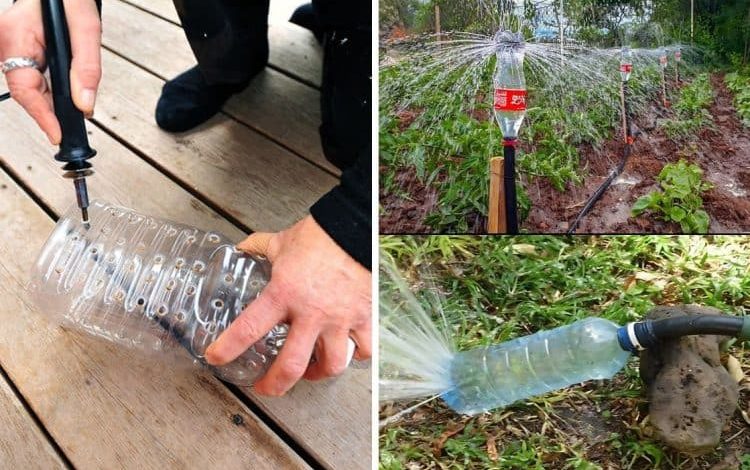
If you’re looking for a sustainable way to save water, reduce costs, and repurpose plastic waste, this DIY rotating irrigation system is a fantastic solution. With just a few simple tools and materials—many of which you may already have—you can create an efficient irrigation setup for your garden for under $10. Let’s get started!
Materials You’ll Need
To build your rotating irrigation system, gather the following items:
- Used plastic bottles (1-liter or 2-liter size works best)
- Scissors or a utility knife
- A piece of PVC pipe
- A drill (or a sharp tool like a nail)
- Sand or small gravel
- Tape (optional)
Step-by-Step Guide to Creating Your DIY Irrigation System
Step 1: Clean Your Bottles
Collect a few empty plastic bottles, preferably of the same size for uniformity and better functionality. Rinse them thoroughly to remove any residue, then let them dry completely.
Step 2: Cut Off the Base
Using scissors or a utility knife, carefully cut off the bottom of each bottle. This will turn the bottle into a funnel-like shape. If the edges are uneven, trim them to create a smooth, clean finish.
Step 3: Plan Your Layout
Decide where you’ll place the irrigation system. Whether it’s for a vegetable patch, flower bed, or individual plants, mark the locations where each bottle will go. Ensure your PVC pipe or hose can reach all the marked spots to distribute water evenly.
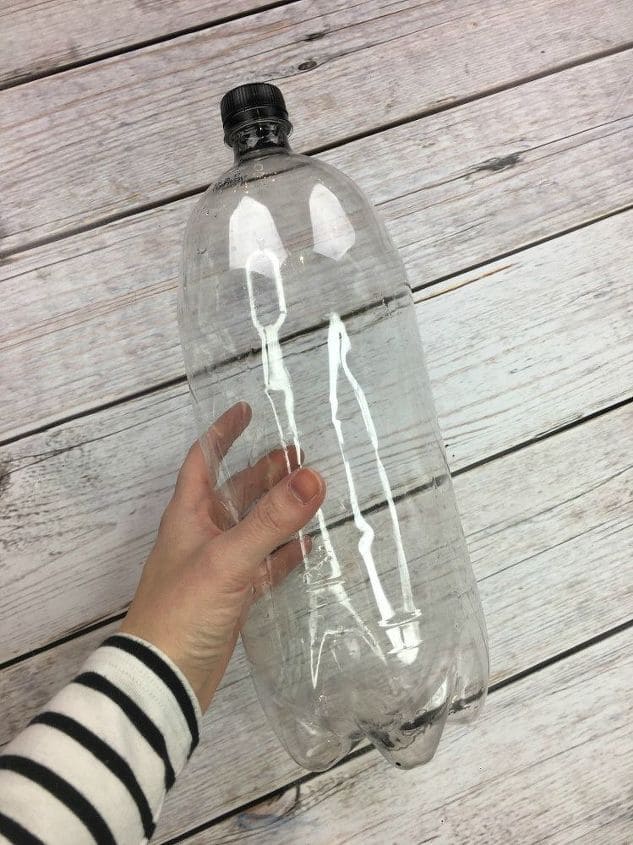
Step 4: Create Watering Holes
Use a drill, nail, or another sharp tool to puncture small holes around the sides of each bottle. These holes will act as tiny sprinklers, allowing water to flow into the soil at an even rate.
Step 5: Anchor the Bottles
Place each bottle upside down into the soil at your marked spots. Push the neck of the bottle a few inches into the ground to stabilize it. For loose or sandy soil, add a bit of gravel or sand inside the bottles to weigh them down. If extra stability is needed, tape the bottles to sticks or stakes for support.
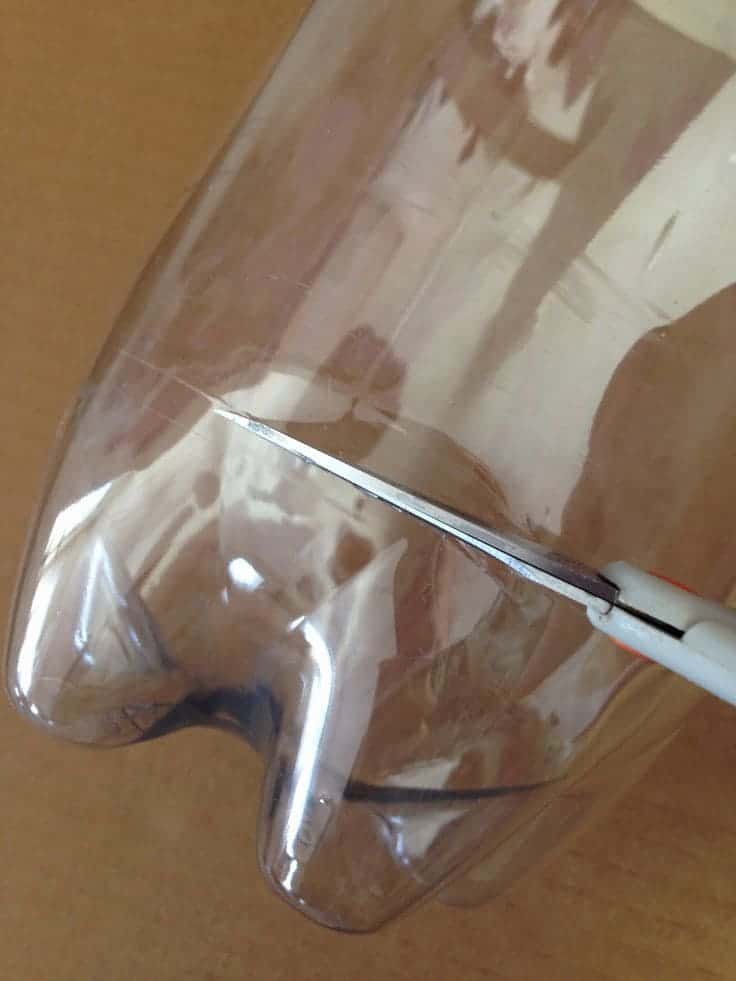
Step 6: Connect and Test the System
Attach your PVC pipe or hose to a water source, positioning it so water flows into the bottles. Turn on the water supply to test the system, ensuring that water is being evenly distributed through the bottle holes. Adjust the water pressure as needed for a steady flow.
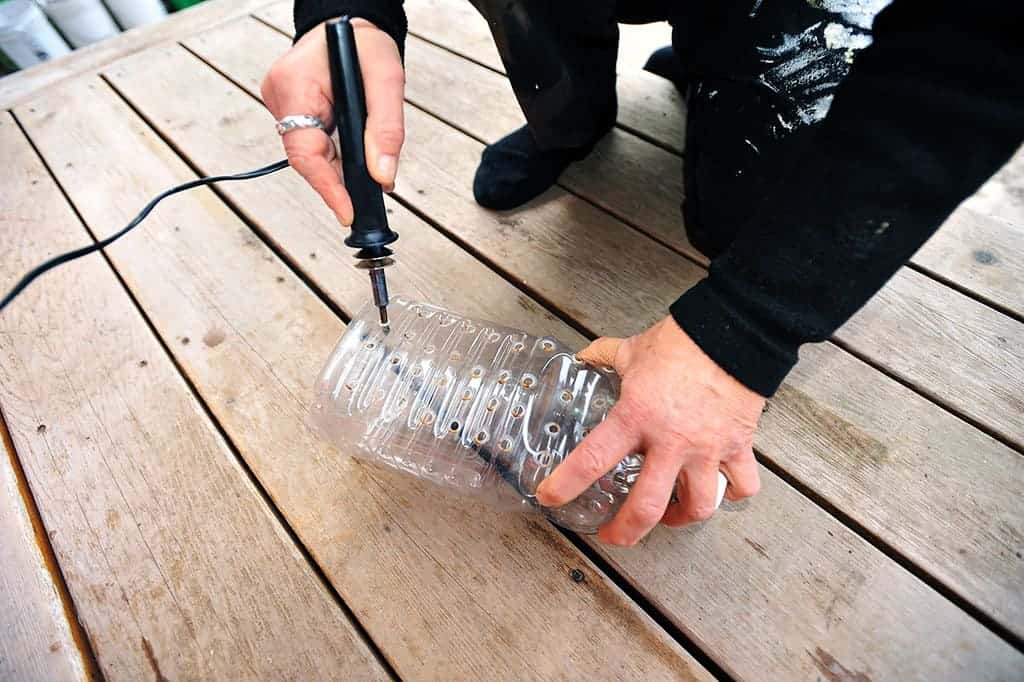
Step 7: Maintain Your Irrigation System
To keep your system running smoothly:
- Check the bottles regularly for clogged holes and clean them if necessary.
- Monitor the soil around your plants to ensure they’re receiving the right amount of water.
- Adjust the layout or water pressure based on your garden’s needs.
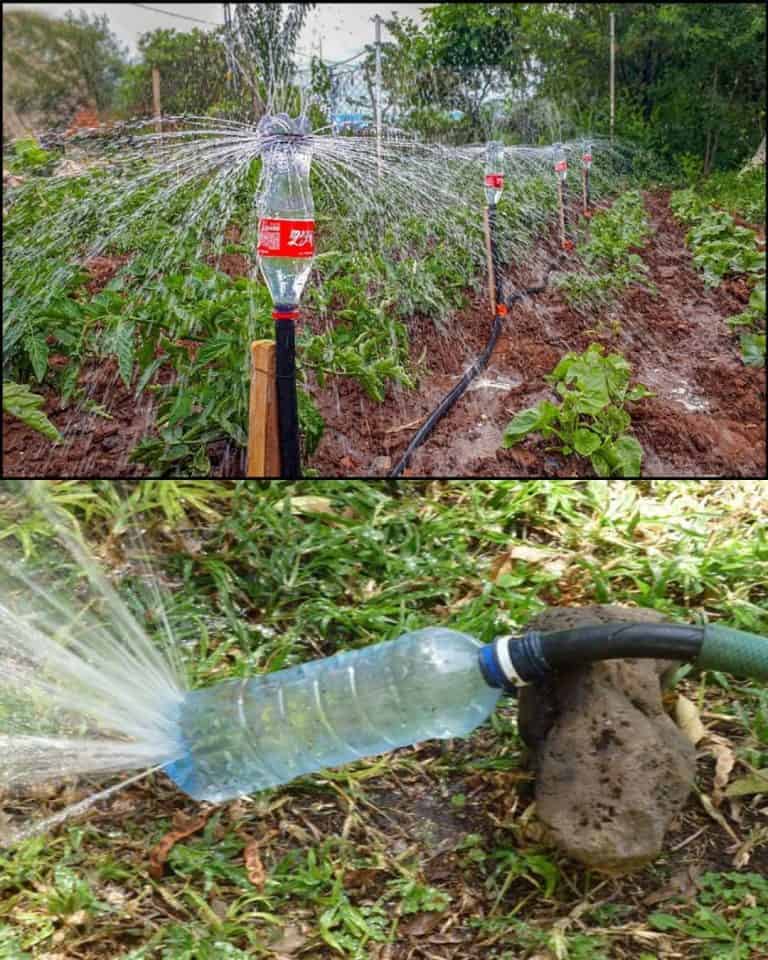
Why Use This DIY Irrigation System?
This rotating irrigation system is an eco-friendly and cost-effective way to repurpose plastic waste while ensuring your plants receive consistent hydration. It’s simple to set up, easy to maintain, and customizable for gardens of any size.